Oman is off the beaten path and bursting with culture & natural beauty. We travelled to this Arabian treasure for the adventure but were left in awe of the beautiful country and its people. This Oman Travel Guide will share everything we discovered from our amazing time in Oman including Oman travel tips, the best time to visit, safety and etiquette as well as our essential Oman packing list.
Our incredible journey took us from the capital of Muscat, to the ancient city of Nizwa, through the dunes of Wahiba Sands & down to the traditional fishing village of Sur. We did our entire trip with a rental car, which allowed us to visit the best places in Oman including the wadis, rugged coastlines and Daymaniyat Islands.
Plan your trip to Oman with our Oman travel blog and essential tips for visiting Oman.


Highlights of visiting Oman
Here are just a few reasons to consider travelling to Oman:
- Stunning variety of landscapes – there are sandy deserts, steep mountain ranges, grand mosques, old fortress towns, turquoise water beaches and oasis wadis. Oman has it all!
- Perfect for an Oman road trip – safe roads and all the highlights can be reached without having to drive more than a few hours at any time.
- Amazingly warm, modest and generous people – I can’t say enough about this!
- Authentic cultural experience – there’s minimal development like neighbouring Dubai and the country is very proud of their culture.

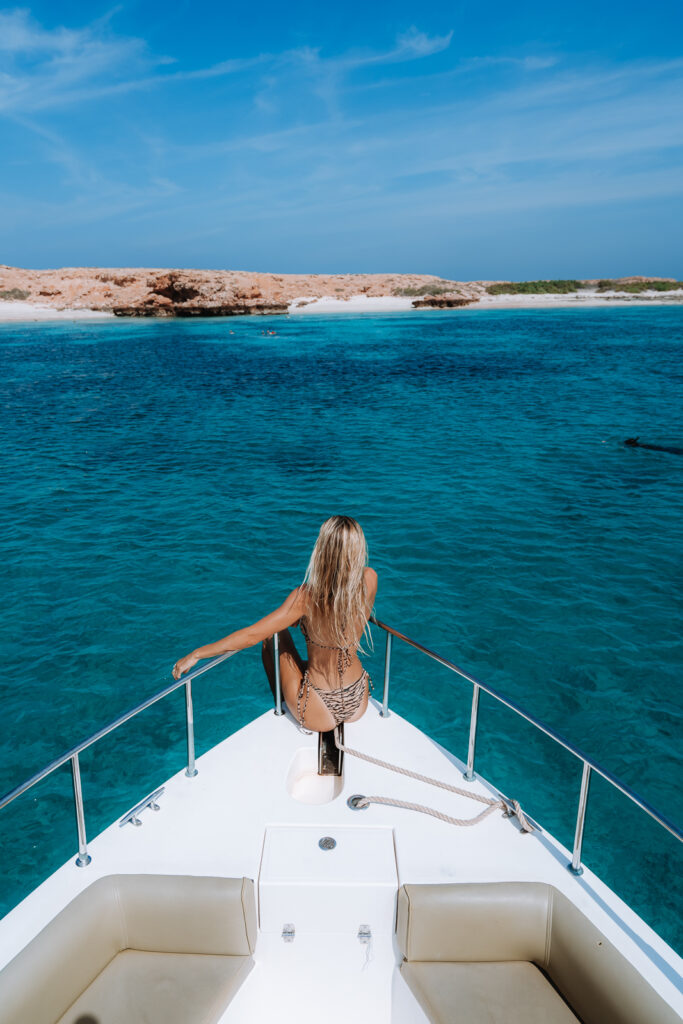

When is the best time to visit Oman?
Oman is a hot, dry country, so avoid travel to Oman in the summer months (June – August). Daytime high temperatures in Oman can reach 40°C (104°F) in the summer.
The high season and the best time of year to visit Oman is October – March when daytime temperatures are cooler. We chose to visit in October and November as we didn’t want the nights to be too cold for our desert stay. We had amazing weather during this time and would recommend!
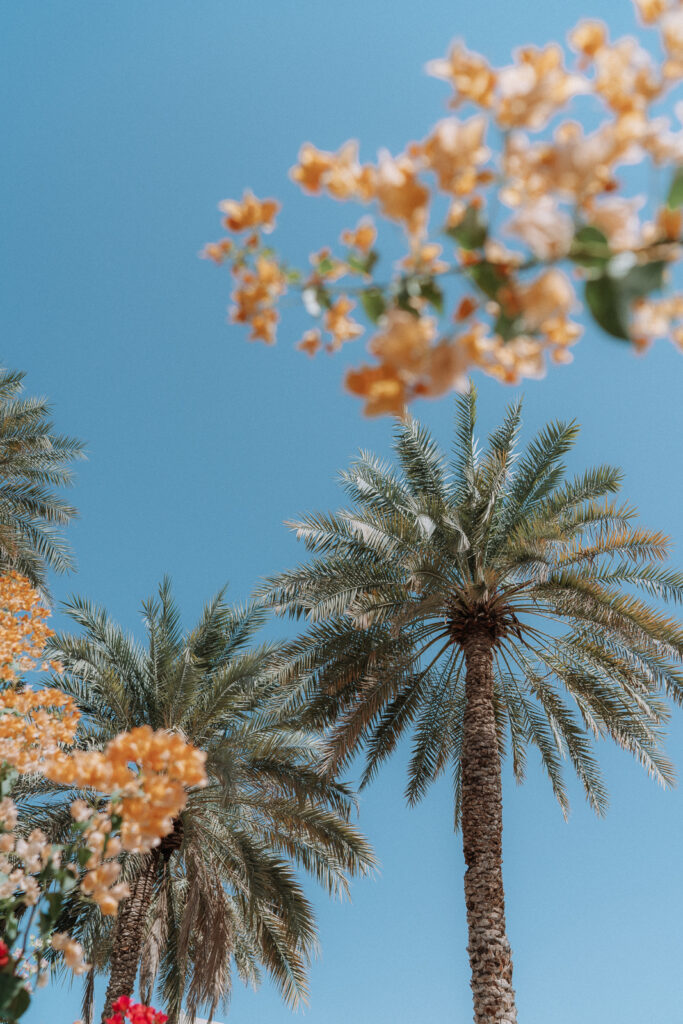
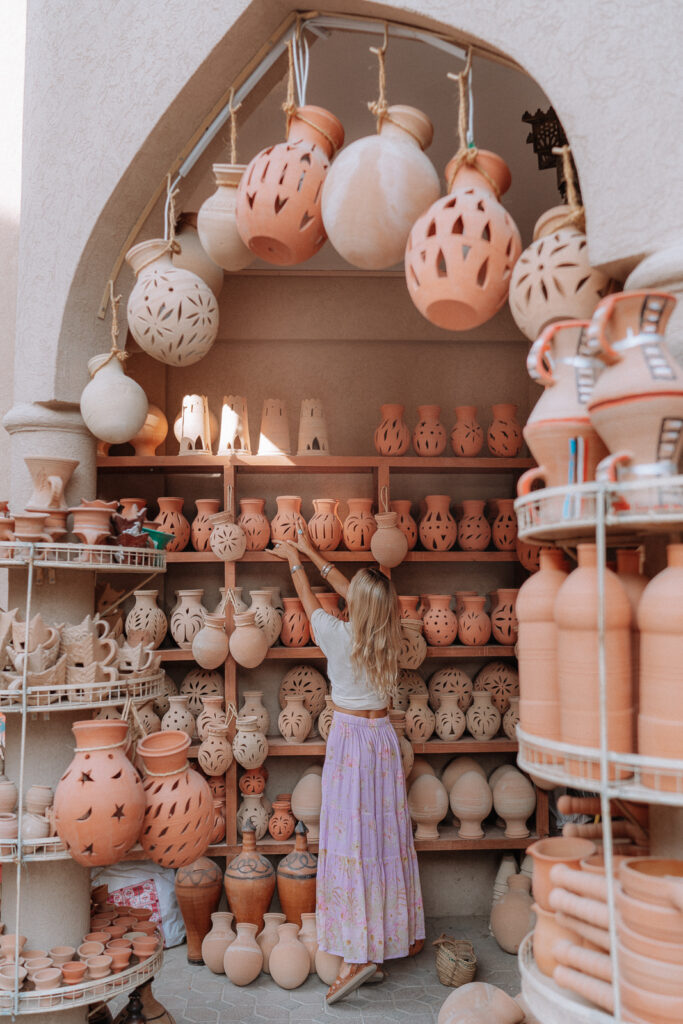
Top places to visit in Oman
Check out our Best Places to Visit in Oman guide which will give more detail on these amazing spots!
- Muscat – the clean and bustling capital city where you’ll likely fly in to travel to Oman. Here you’ll find the incredible Sultan Qaboos Grand Mosque.
- Nizwa – an ancient city surrounded by date palm plantations and set against dramatic jagged mountains. You can explore the pastel coloured castle at Nizwa Fort (our trip highlight), wander through artisanal souks and access the nearby Jabreen Castle.
- Wahiba Sands – a region of endless silken sand desert beyond the mountain regions. You can stay in canvas tents overnight for a unique desert stay (we stayed at Desert Nights Camp). You’ll be surrounded by wild camels and terracotta sand baked dunes as far as the eye can see.
- Sur – an ancient seaside port town, full of white washed architecture and traditional sailing boats.
- Wadis – freshwater pools hidden between rocky ravines. Wadis are little oases found dotted throughout the rocky desertscapes of Oman. Our favourite was Wadi Shab which was reached after a hot & dusty hike, making the cool pools even more refreshing to wash away the desert dust.
- Bandar Khayran – this area of rugged coastline boasts spectacular views and beautiful little beaches. It’s also where you’ll find the Shangri-La Al Husn, the perfect luxury escape just outside of Muscat.
- Daymaniyat Islands – a cluster of uninhabited rocky islands surrounded by turquoise waters. These islands are part of a nature reserve for diving and snorkelling, reached via a 40min boat ride from the mainland.
Oman travel tips and guide
How to get to Oman
We flew into the capital city of Muscat in the north of the country. This was very central to all the places we wanted to visit in Oman. Muscat is only an hours’ flight from Abu Dhabi and Dubai and there are direct flights from some European cities.
How many days in Oman do you need?
We hired a rental car to explore Oman and found this the perfect way to see everything we’ve mentioned in this Oman travel guide. We travelled around for 11 days and this was the ideal amount of time for us. At a squeeze you could visit for a full week if limited for time. And if you had a full 2 weeks in Oman, you’d be able to get to some more remote locations.
Note that we just explored the North of Oman, and there’s plenty more to see in the South of the country too!

Getting around Oman
As I mentioned, we hired a car and this is one of our top Oman travel tips for exploring the country! Driving in Oman, the roads were all amazing. There’s been a lot of money spent on infrastructure over the last 10-15 years and this means that even out in semi-rural areas, you can expect new multi-lane highways. Just mind the occasional goats, camels and donkeys!
Tip – Beware of speed cameras that are set up literally every kilometre on the highways!
If you plan to go to the mountain areas like Jabal Shams, you will need a 4WD. We didn’t go to these areas and so a 2WD car was fine. The only exception to this was at our Wahība Sands desert camp. Because we didn’t have a 4WD we had to arrange with the hotel for a 10 minute transfer to the camp (for around US$40 return). But check your desert camp for these details as some camps can be reached by 2WD.
Safety in Oman: is Oman safe to visit?
We often get asked, how safe is Oman?
We never felt unsafe once during our 11 days of travel! Of course by being respectful in dress and obeying the rules, we made sure we were avoiding any issues along the way. But the people we met everywhere were absolutely amazing – some of the nicest people we’ve ever encountered on our travels and very welcoming of tourism in Oman.
Follow the usual common sense rules, always travel with travel insurance and expect some extra attention (in a good natured way) if you travel somewhere more remote where you might be the only blonde caucasian woman wandering around.
What to pack for Oman
Besides all your usual travel essentials, here’s some specific things to consider packing for your visit to Oman.
- Modest clothing should be top of your Oman packing list. This is for men and women. Guys will need to have closed shoes, long pants, and long sleeve shirts at the Grand Mosque, and some nicer restaurants and hotels as well. What to wear in Oman as a woman is very important to pay attention to before your trip. Women will need to be covered to below the knees and over the shoulders and chest generally in public places, with the Grand Mosque also needing full covering of body and hair.
- Hiking shoes. Some of the hikes to the wadis can be a little tough in just sandals, so bring some half decent walking shoes. FYI I did the hikes fairly easily in Bikenstocks because I didn’t bring anything else. If you are unsure then plan a little better then I did haha!
- Swimwear. When you picture sacred mosques and the hot deserts of Oman you wouldn’t be expecting to pack swimwear. But if you stay at beachside hotels and/or visit wadis or the Daymaniyat Islands then this is a must. The water is clear and the sea temperatures are warm in Oct/Nov! I wore modest swimwear to make sure I felt comfortable around the locals.
- GoPro. We saw SO many turtles at the Daymaniyat Islands, so don’t forget something to record your underwater experiences.
- The Oman currency is Omani Rials, you can exchange before you visit or once you’re in the country and as it’s tied to the United States Dollar, exchanging from USD is most popular.
Can you bring a drone to Oman?
An extra point in our travel guide to Oman is to make sure you’re aware of the drone rules in Oman.
In most middle eastern countries drones are forbidden. For Oman, you’ll need to apply for a drone permit to bring one into the country. Otherwise they will be taken at the airport and if you are upfront with authorities you’ll likely be able to collect the drone when leaving the country.
As we were on a large trip going to many places (and couldn’t get a permit in time) we left our drone with airport customs. They were really nice about it (classic lovely Omanis) but it’s a hassle and risk so consider your need for a drone here. The same applies to the United Arab Emirates (UAE).
Oman is an incredible country to visit and we hope this Oman travel guide inspires you and helps you to plan your Oman travel itinerary!
Like this post? Pin it for later and share it with others!
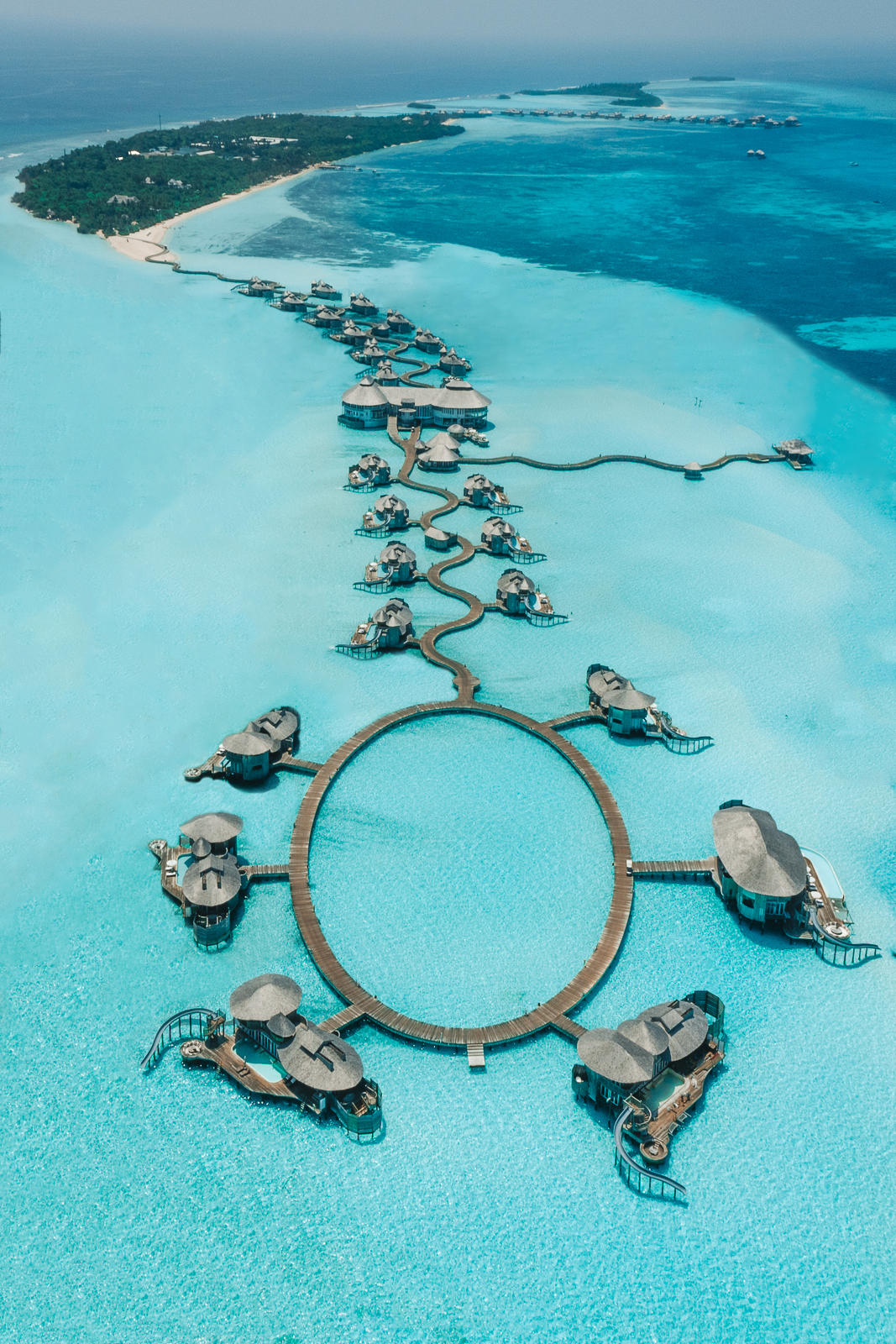

The comments +